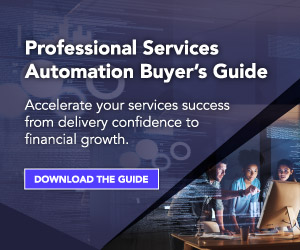
Technology. It’s everywhere. Technology is being used to transform how people live, connect, and do business. It’s a commodity that can be bought and sold—the ubiquity of which is changing how IT services and sales are being conducted.
Traditionally in sales and services—particularly in IT—the supplier has had all the power. There was a demand and vendors supplied. Vendors were paid premium rates for what was needed.
The greatness of a technology product was measured in its complexity—the more features, the “better” the product, and the more a vendor could charge up-front … Even if all of the features weren’t used by the customer. That differential—the measurement between a technology’s full capability and how it’s actually consumed by the end user—is the “consumption gap.”
The problem with the consumption gap and how services have been sold is that it doesn’t keep the customer in mind. Customers would pay for a technology, implement it, and then would be solely responsible for recognizing value.
But that’s changing. The power is shifting from the supplier to the customer. Greatness is no longer measured in complexity or number of features, but rather in how directly a solution can address business challenges. Customers only want to pay for what they need to get the job done, and they want the ongoing help of the vendor post-implementation to realize value and outcomes.
What’s caused the shift? The cloud—mostly. Take the example of the iPhone. Users can build a library of apps that suit their individual needs. If an app is needed to find the nearest drugstore, it can be downloaded. The immediate need is fulfilled. That same principle is being applied to B2B software because businesses don’t want to pay an up-front premium for a features-rich solution that they won’t use. They want the same delivery model applied to enterprise software.
The demand is being answered. Today, instead of delivering complicated software, IT services are having to take a cold, hard look at how to stay competitive. Delivery is changing to Everything-as-a-Service (XaaS, or pay-as-you-go subscription models), updates are ongoing, and support services are in place to help customers realize the full potential of the solution. This shift is resulting in new supplier-customer dynamics, tailored offerings, and matured engagement strategies. It’s reshaping professional services.
Find out how to address the consumption gap in the Changepoint white paper, “Professional Services and Customer-Centricity: Bridging the Consumption Gap.” Discover what’s being directly affected as the power shifts from supplier to vendor and how to stay competitive by closing the consumption gap and keeping customers top-of-mind.


